
Schaaken Castle is a former order castle in the Kaliningrad region, which is the best preserved historical castle of the region.
Now the castle complex has been partially restored, works as a museum with museum expositions and a tavern on the territory. The castle hosts holidays, festivals, concerts and various events.
These chronicles say that the defensive fortress of the Teutonic Order of Shaaken was founded around 1270 on the site of the ancient fortification of Zoke.
The original building of the castle was wooden, and since 1328 it has been rebuilt in stone. In 1525, when the possessions of the Teutonic Order were secularized, the castle became a ducal residence. It was destroyed by fire in 1606 and then partially restored with major architectural changes.
Over the course of history, various buildings have been added to the defensive walls of the castle, including a chapel, living quarters and outbuildings.
In those distant times, the Order's possessions consisted of Liska-Schaaken of East Prussia (today it is the village of Nekrasovo in the Kaliningrad region of Russia).
The name "Shaaken" in Old Prussian means "grass"; after all, the castle is located in an area among grass and meadows.
In 1711 and 1717 , Tsar Peter I stayed at Shaaken Castle .
During the Second World War, the castle was practically not damaged. After that, it was used as a shelter for German orphans, a collective farm stable, housing and for household needs.
Without repair work, the former castle was dilapidated and destroyed, which eventually led it to ruins.
Since the 2000s, the castle has been handed over to private individuals and restoration work has been underway.
Today, this castle is one of the few surviving monuments of the past in the Kaliningrad region, which is reliving its birth. It is a museum and historical complex (entrance is paid), which has a partially restored oval ring wall, several rooms and a basement in the main building, as well as a small territory with a concert venue, a tavern and some entertainment for guests.
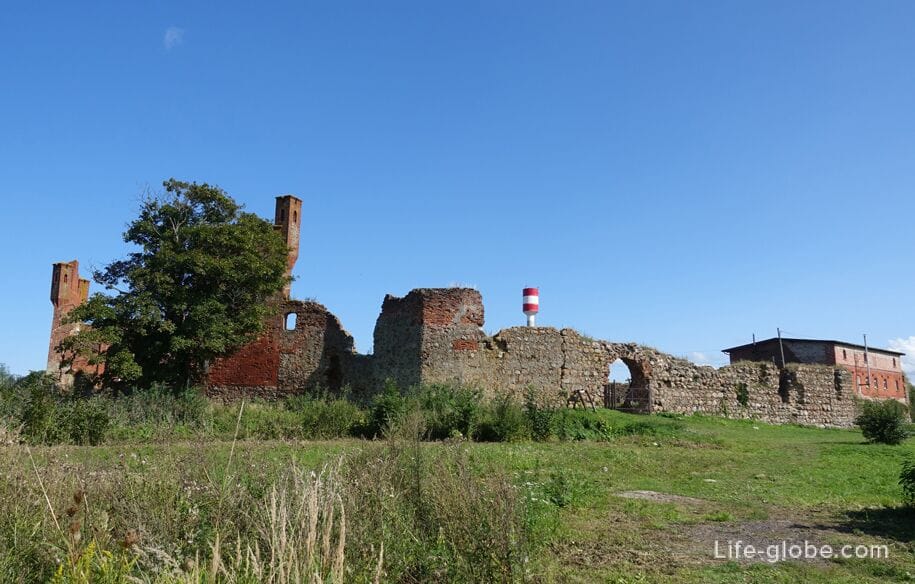

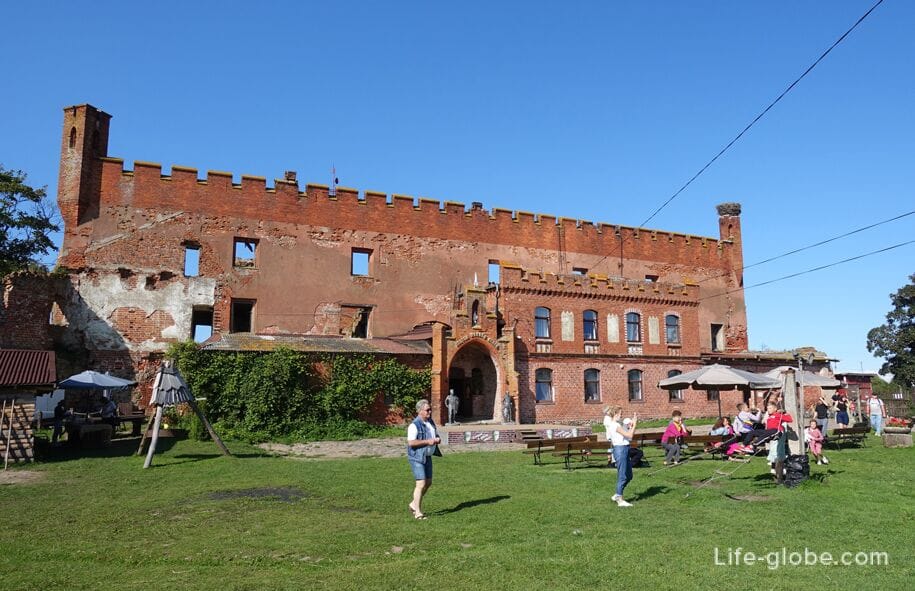
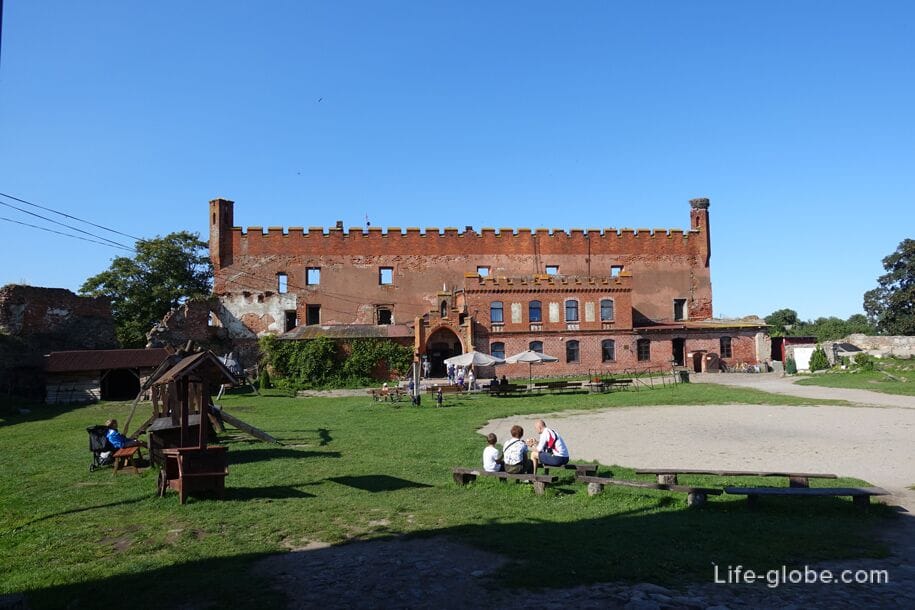
The three-storey main house, 43 meters long, is built of brick and is still medieval in its essence. It is noteworthy that in the main house from the side of the castle courtyard there is a porch in the form of a risalite.
This is the entrance to the museum rooms, which is guarded by two knights, and anyone can become the third by trying on fixed sabathons.
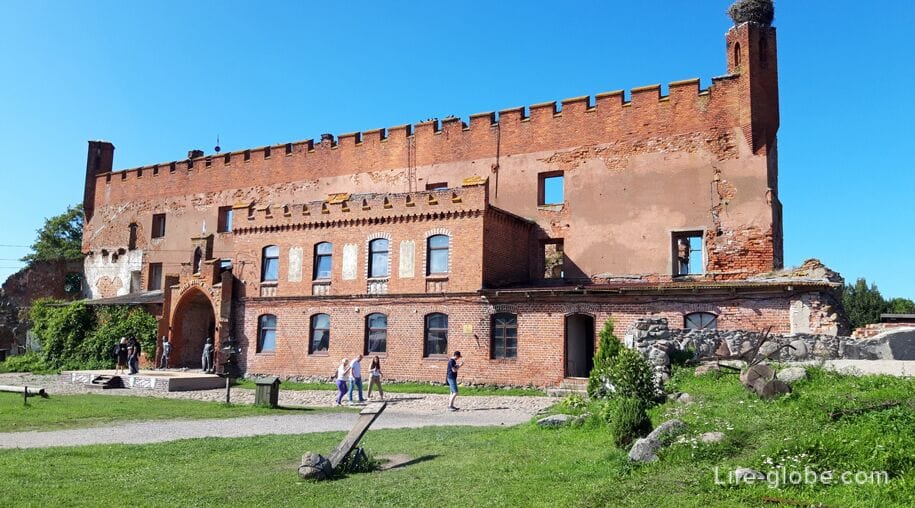
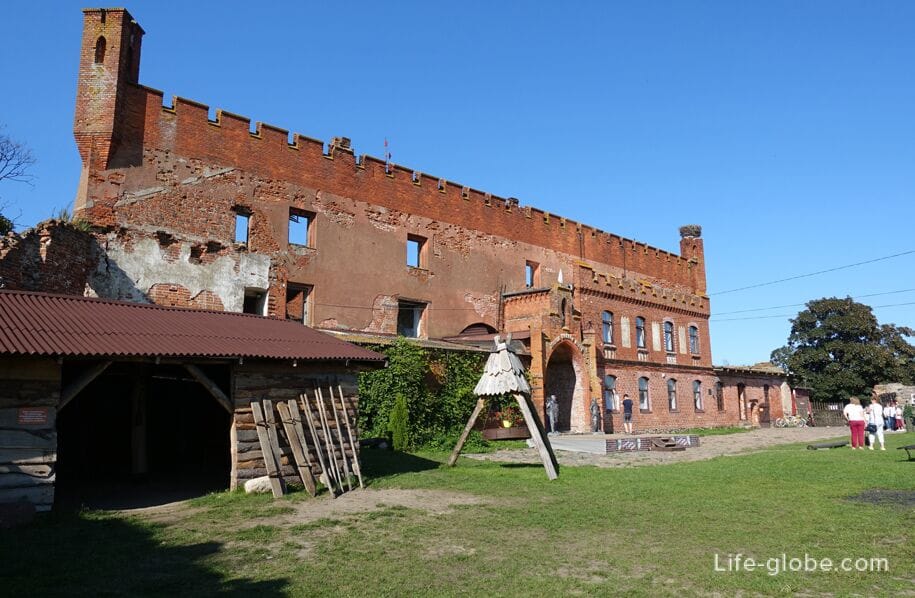
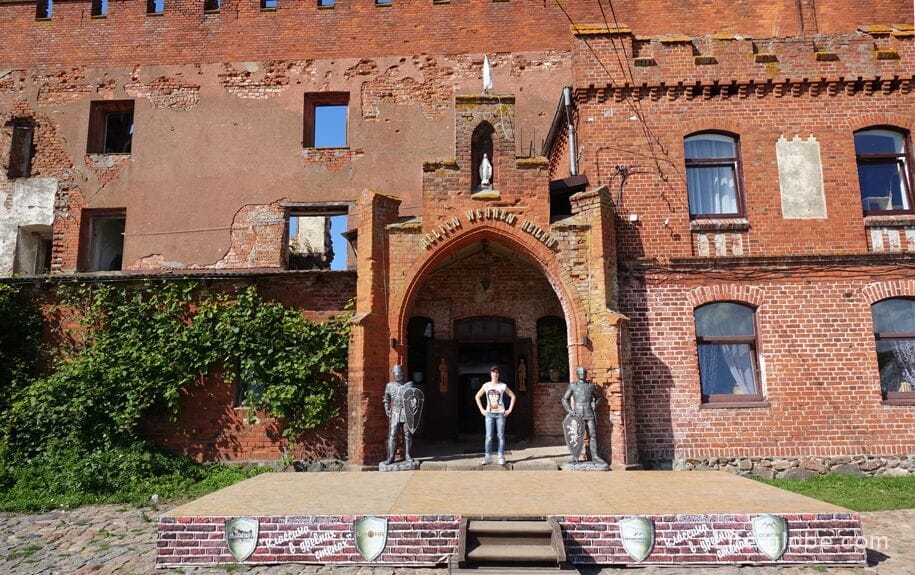

In several halls of the museum are presented:
- medieval weapons, helmets and shields that anyone can try on and feel like a knight of the order;

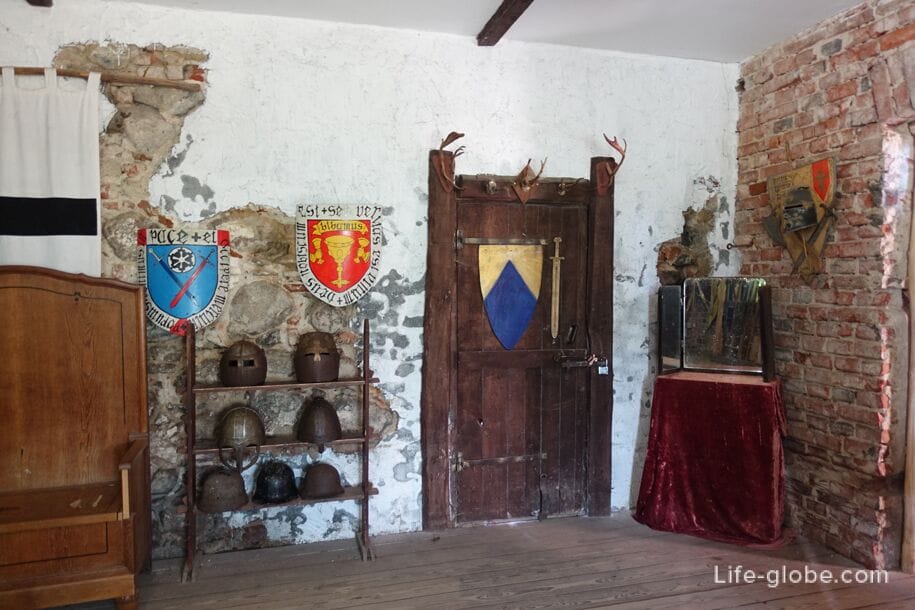
- the most infernal costume of the Middle Ages is the costume of the Plague Doctor. It is because of epidemiological considerations (transmission of the disease occurs during physical contact and through clothing) that doctors were required to wear such special clothing in order to visit patients during the plague.
The wide-brimmed hat identified the doctor at the time. A raincoat, gloves and fishing rods - to hide as much of the body surface as possible. The so-called casket on the neck (pommander), for aromatic herbs that were supposed to "scare away" the plague." A bunch of garlic is for prevention; doctors often chewed garlic so as not to get infected with the plague. Scalpel - for opening bubons. The cane is for examining patients without touching them, and protecting them from infected people if they come too close with help. A primitive gas mask in the form of a bird's beak - then there was a belief that a mask in the form of a bird drives away the plague from the patient and directs it to the doctor's attire, and the eyes of the mask made of red glass made the doctor invulnerable to the disease. The beak of the mask was filled with fragrant medicinal herbs to protect against miasma and stench. All clothes were smeared with wax or grease, because it was believed that wax does not allow sputum to settle on clothes and fleas, which are also carriers of the disease, to gain a foothold;
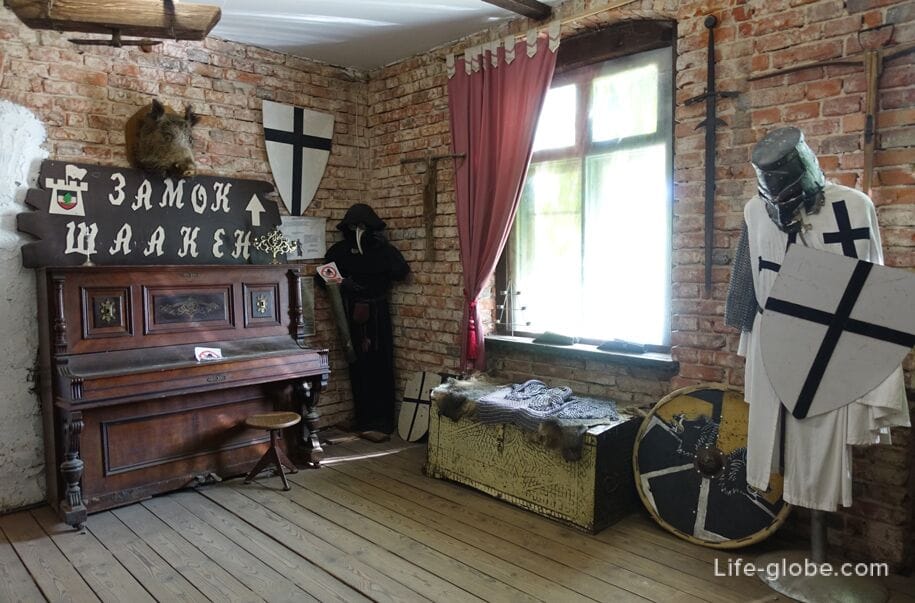

- some furniture, costumes, household items and photographs of castles in the Kaliningrad region.

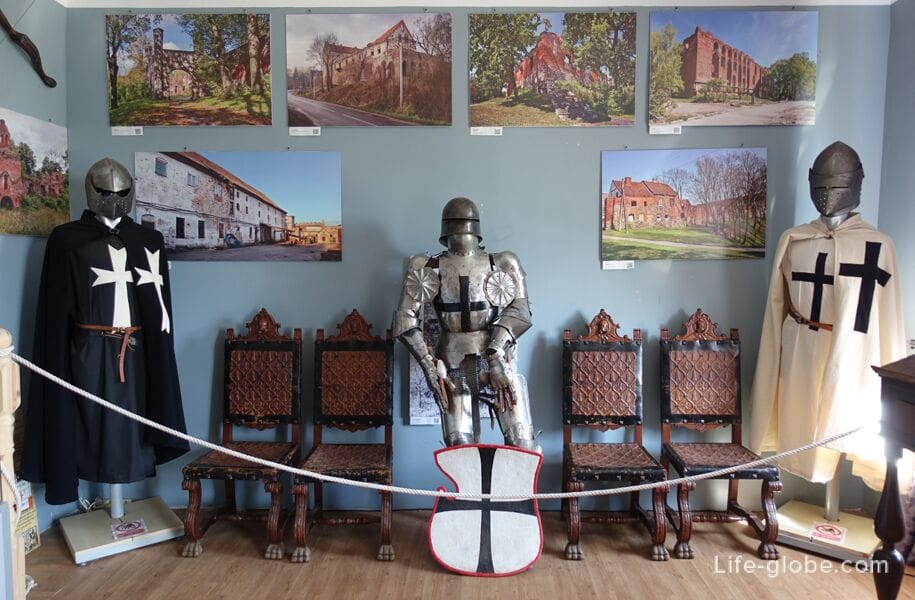
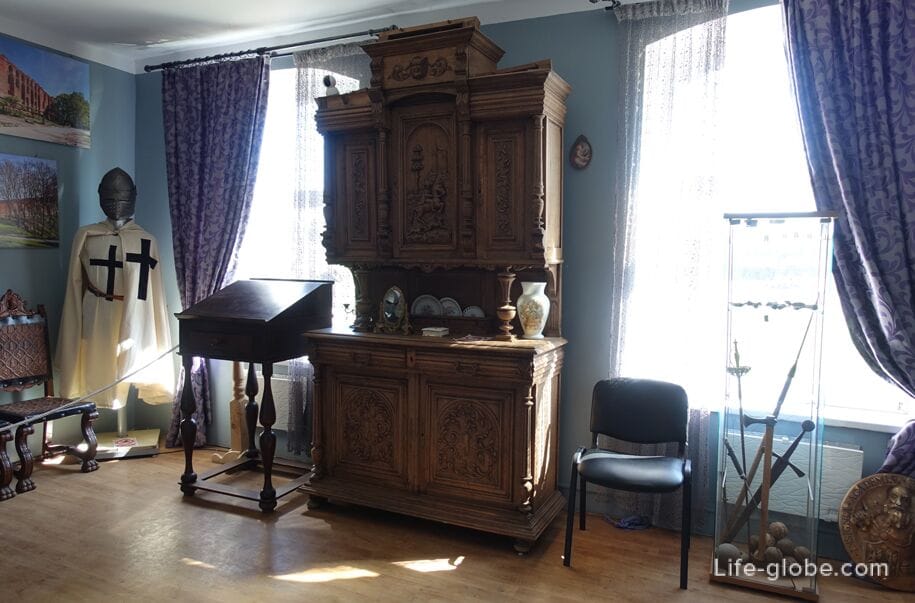
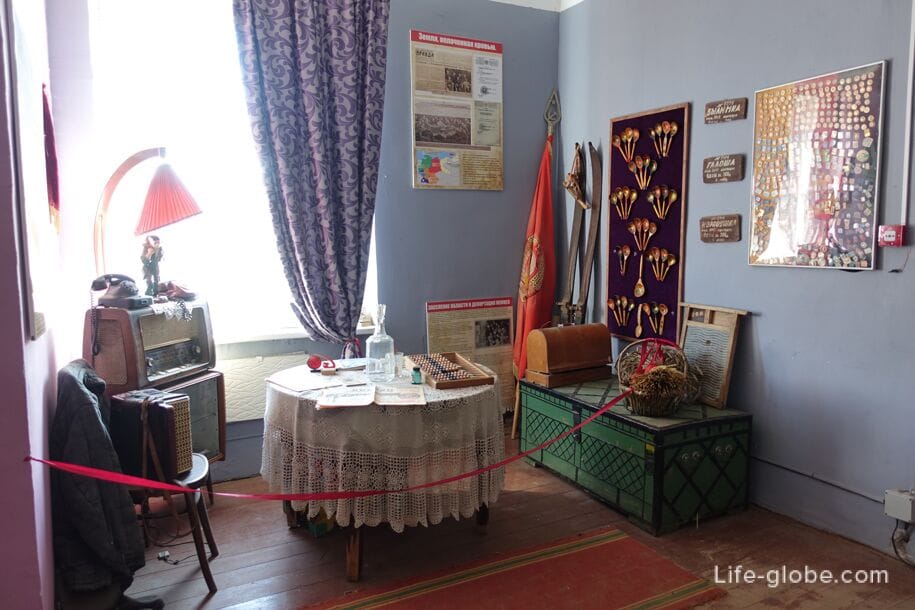
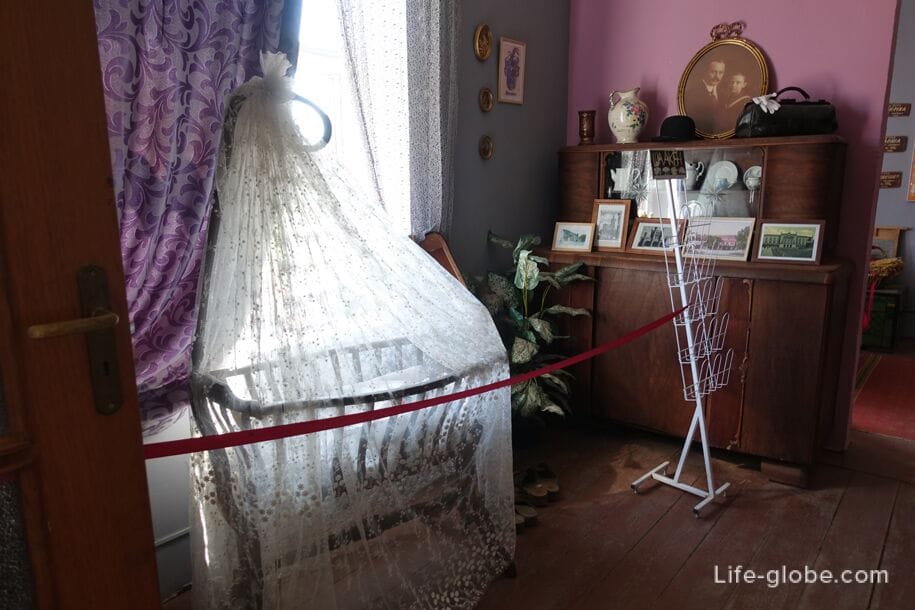
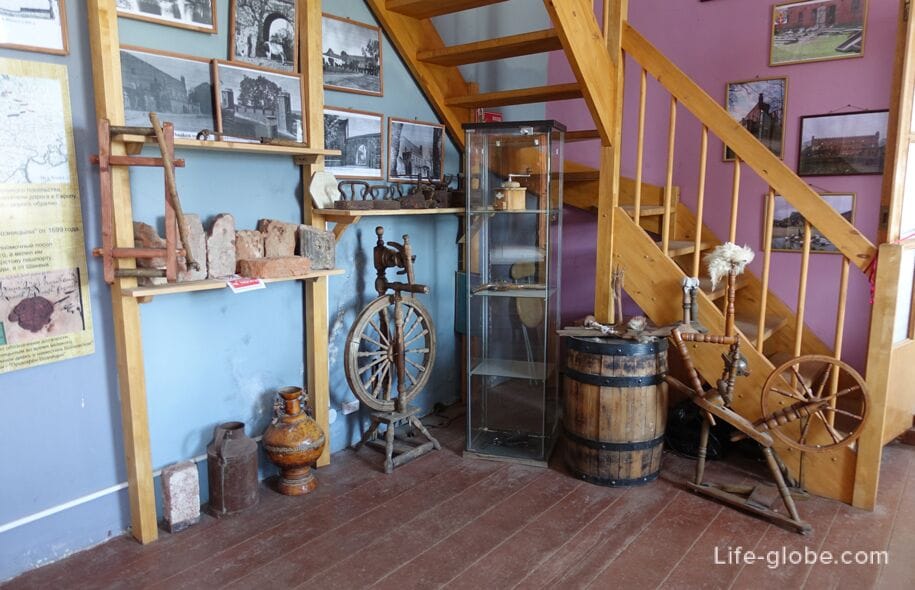
In the same main building of the castle, in the basement there is a museum of the Inquisition "Holy Inquisition", dedicated to the holy department of investigations of heretical sinfulness.
In the past, "Holy Inquisition" was a common name for a number of institutions of the Roman Catholic Church designed to combat heresy. In the legal sense - "searches", "investigations", "research". The term was widely used in the legal sphere even before the emergence of medieval ecclesiastical institutions with such names and meant clarification of the circumstances of the case, investigation, usually by interrogation and often with the use of torture. Over time, the Inquisition began to be understood as spiritual courts of anti-Christian heresies.
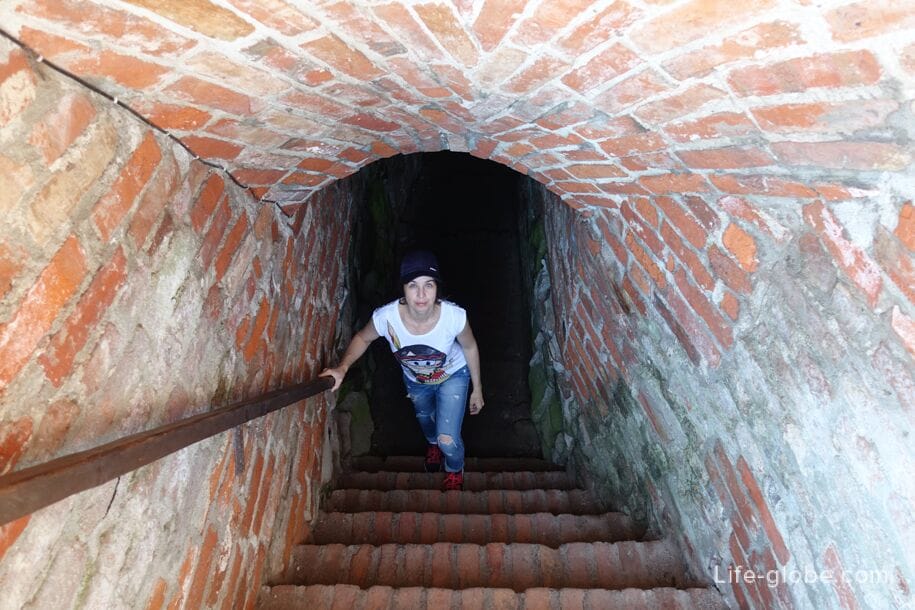
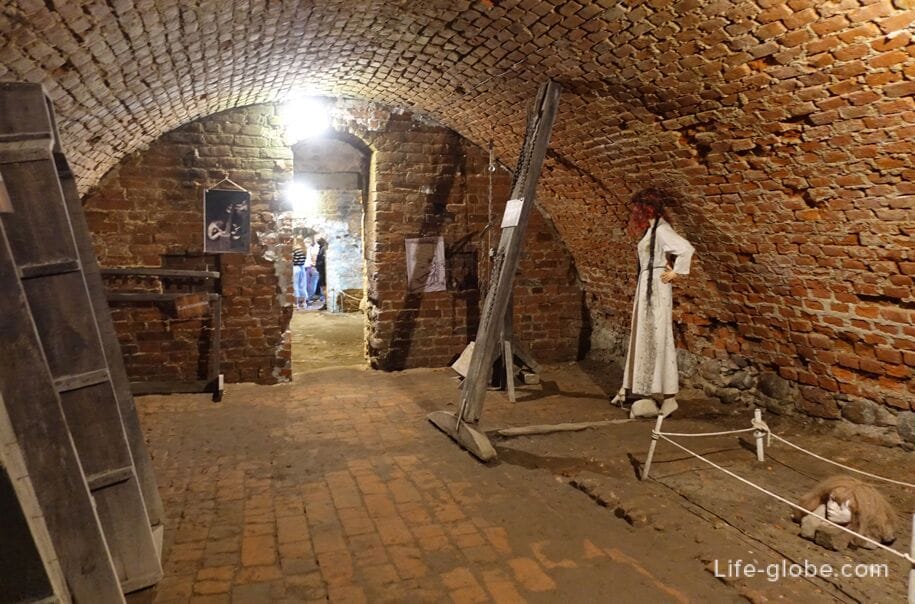
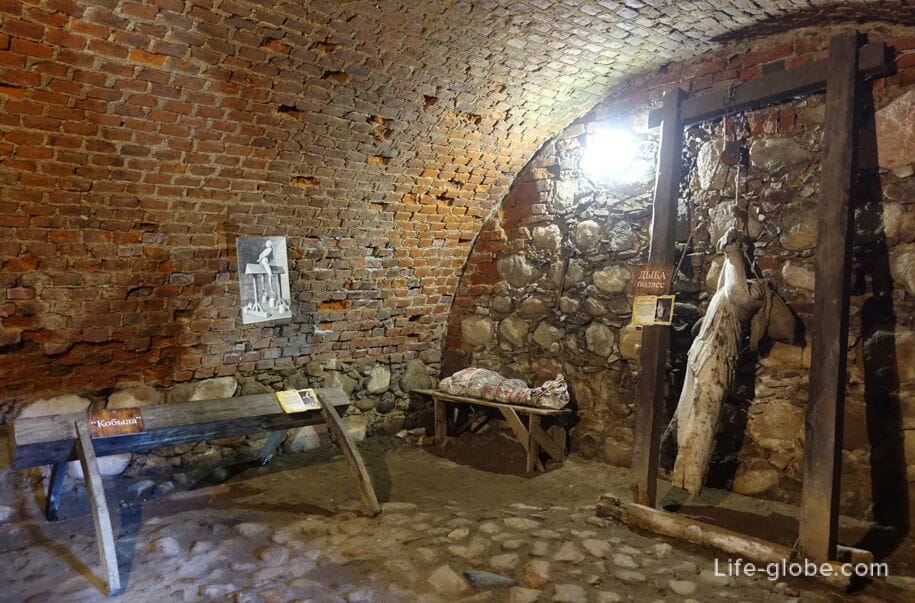
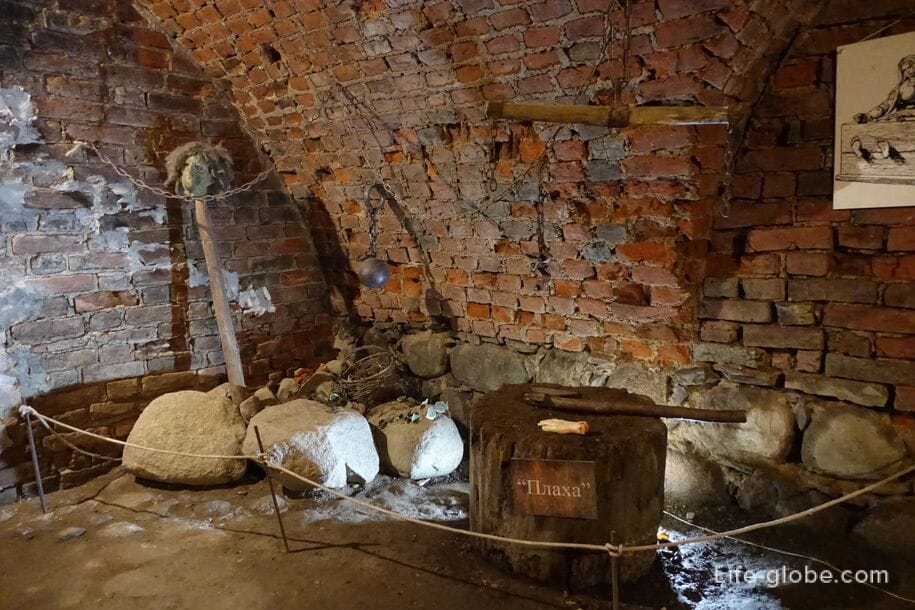
The rack is a suspension that was very common in medieval tortures, since it was considered an easy variant of them. The accused's hands were tied behind his back, the other end of the rope was thrown over the winch ring, then the accused was lifted. Under the weight of his own body, the man's joints turned out.

The mare. The main element of the device is a wedge-shaped angle made of metal or solid wood. The interrogated person was put on top "as on a mare", and a heavy load was tied to his legs and arms, as a rule, these were stones.
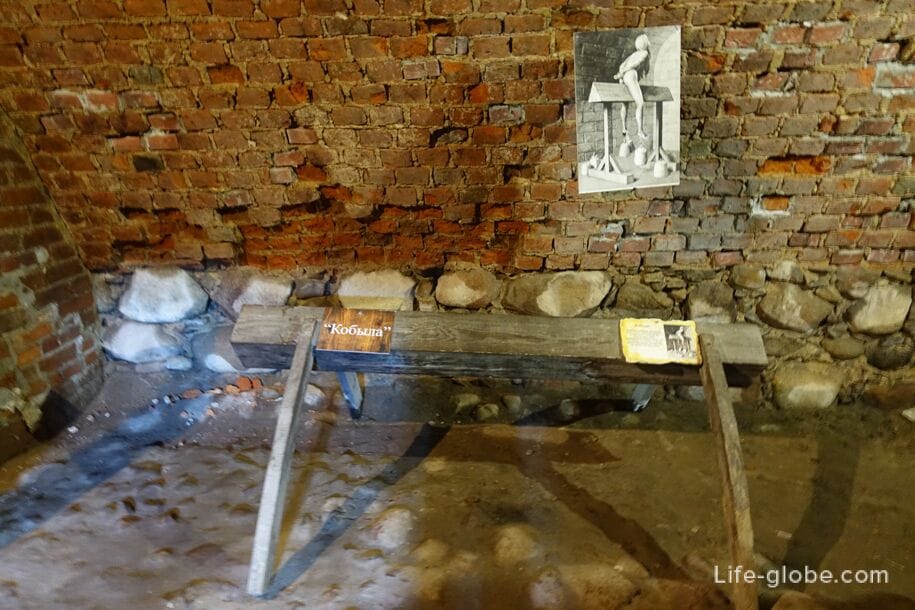
Hell's Bench is the executioner's desk.

Medieval prison cell. In the Middle Ages, it was believed that the human body and soul exist separately. And if the accused received 3 years in prison, and died a year later, the body continued to remain in the prison cell until the end of the term of 3 years.
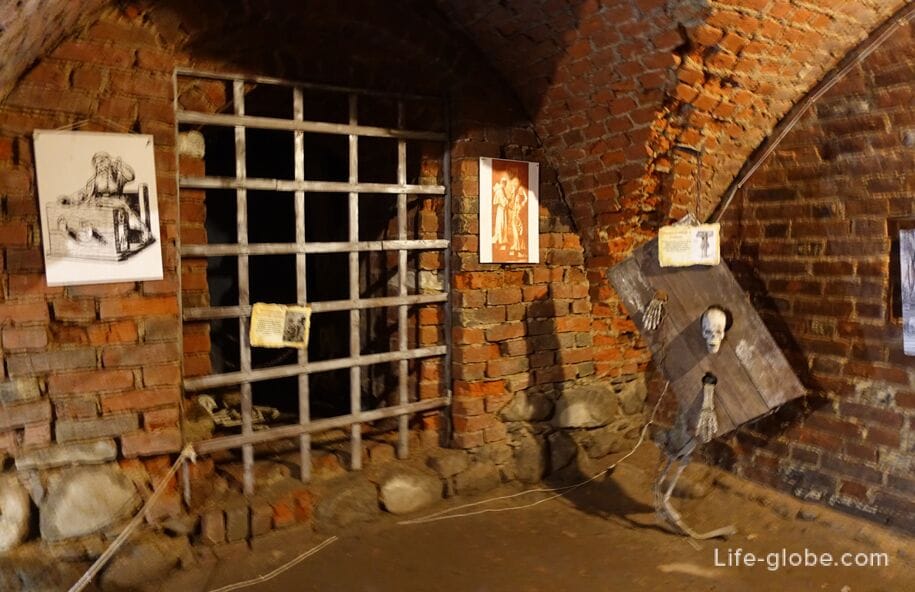
The pillory and winches were especially popular in the Middle Ages and were used for the purpose of shameful punishment in a crowded place, for example, in the central square.

The straw scythe and the pillory.

An unfaithful wife.
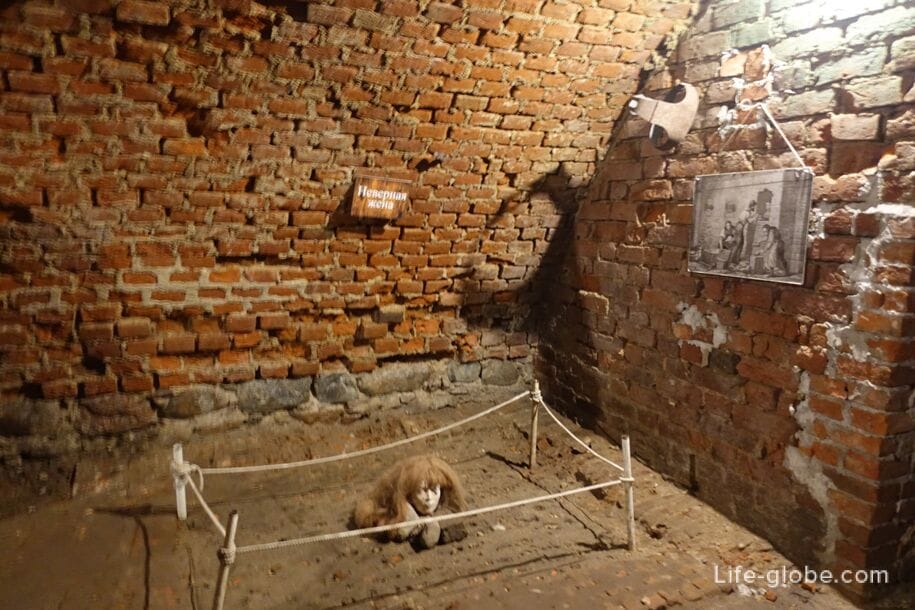
The bed of truth (brazier) and a bone breaker, with the help of screws, the upper bar of which was lowered and broke limbs in several places at once.
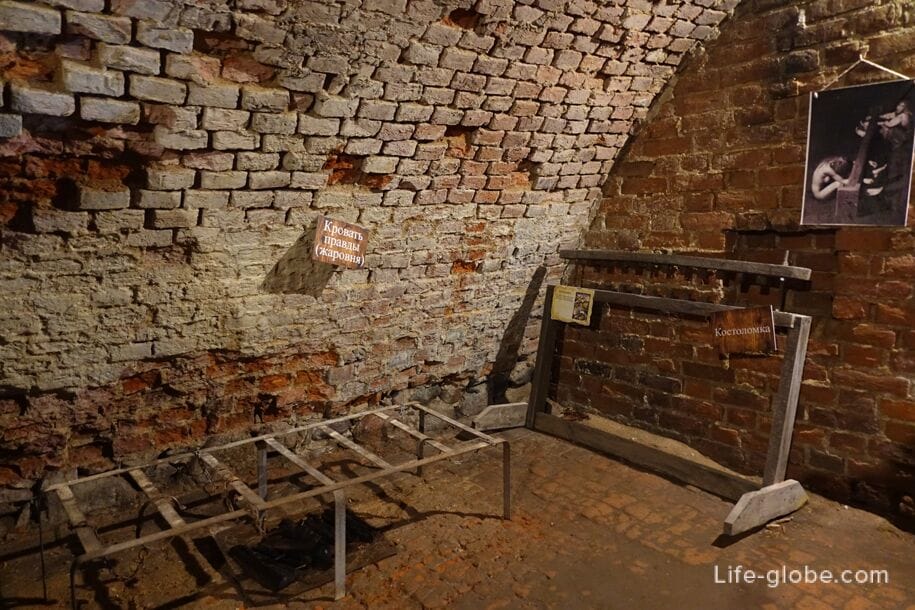
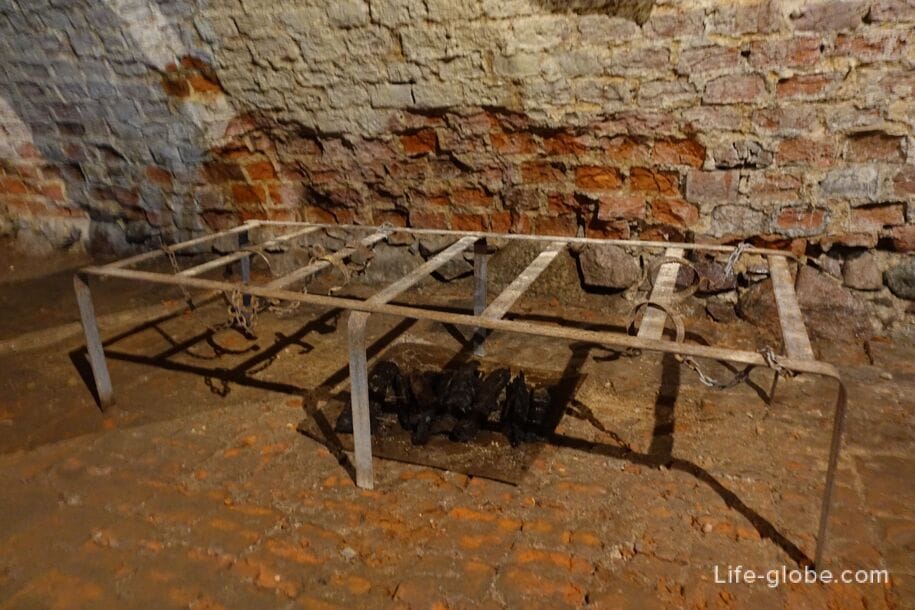
Rack bed. The rack was made of wood, a winch was adapted to the structure, which was controlled by levers.
The interrogated's hands were attached to the crossbar, his legs were stretched by a winch. Often, not only stretching on the rack was used, but it was also combined with waterboarding, tightening a cord that painfully bit into soft tissues, so-called rabbits with spikes could be put under the stomach (these were sharp spikes an inch long). Sometimes the stretched limbs were smeared with fat and so the interrogated was left, rats came running to the smell and gnawed their fingers.
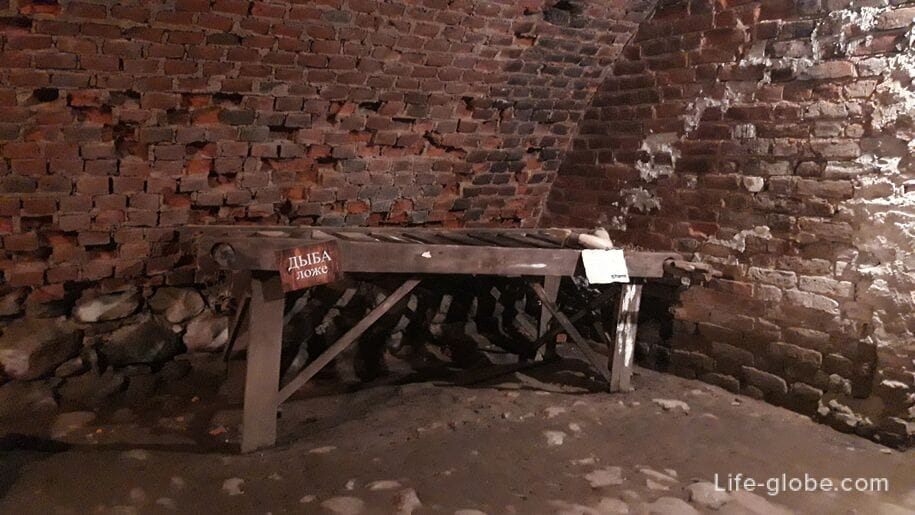
Rat chair. A chair with a high wall, equipped with cuffs for fixing the arms and legs, a wide belt for the neck and head. There is a hole in the base of the chair seat. The victim was put on an ordinary chair, fastened, and a copper pot was placed under the chair, in which hungry rats were put and the pot was heated, as a result of which the rats were looking for a way out and the easiest way was through the human body. The victim died a painful death.
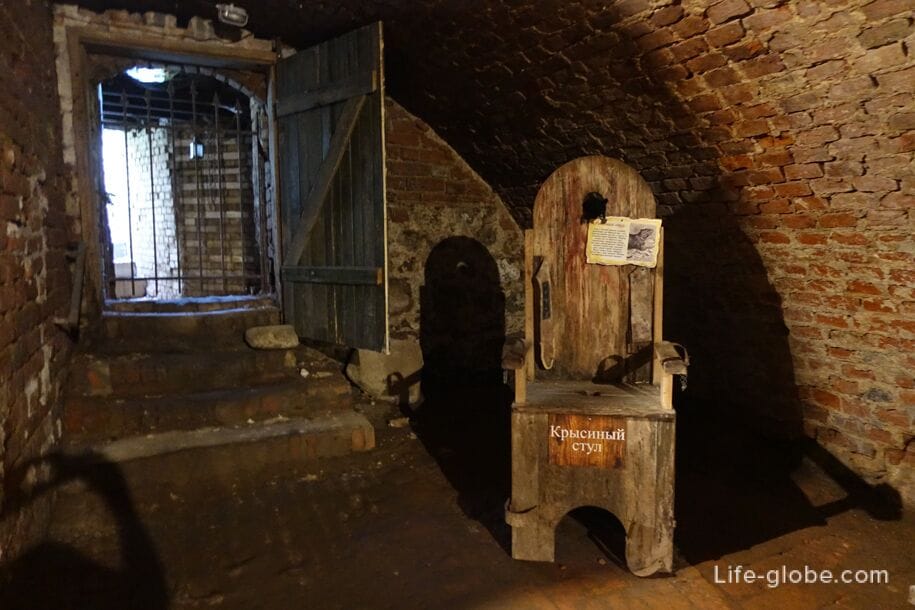
The Spanish virgin. It was not used in Prussia. The victim was put in one box, the second was closed. After a while, when blood circulation was disrupted, the knees buckled, and the victim leaned against the walls of the "Virgin", filled with sharp spikes.
The spikes were positioned in such a way as not to touch the vital organs of a person. The torture was not fatal, but painful and lasted long enough.

In the main building of the castle, you can go to the remains of the former premises, where you can get acquainted with the brief history of the castle and see in the photos how it looked earlier.
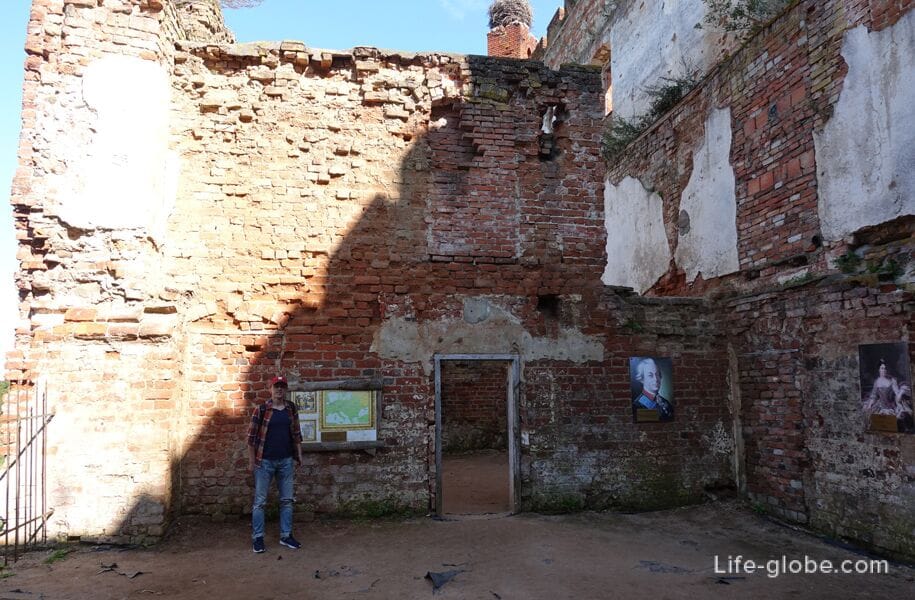
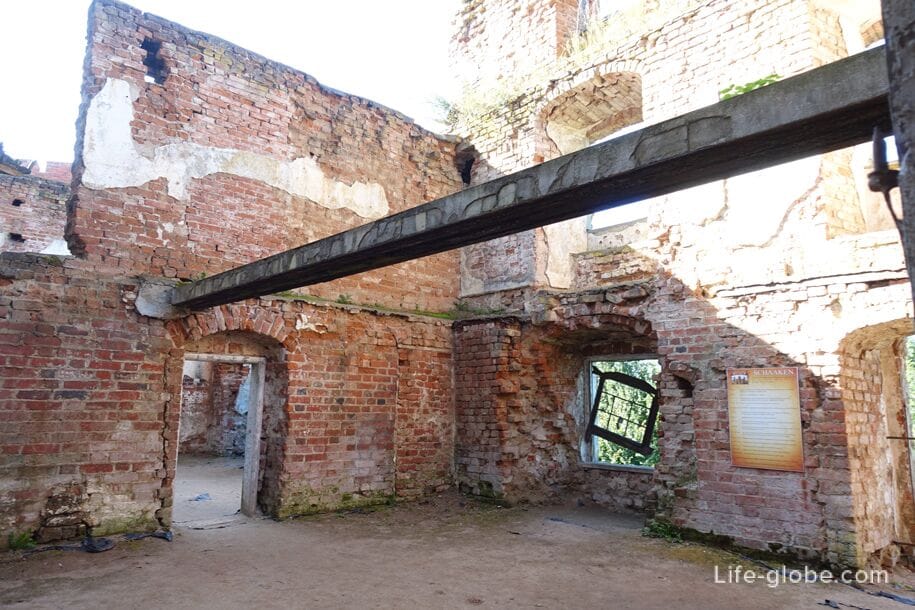
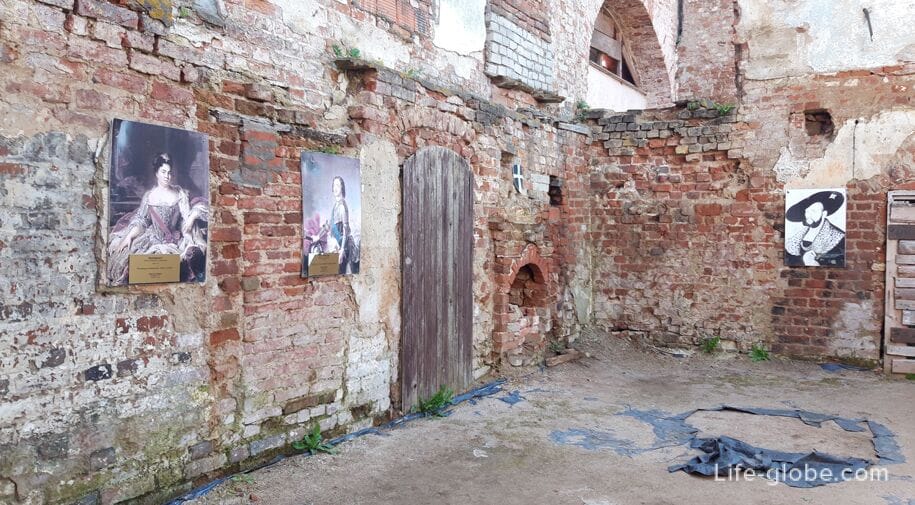

The central place in the Shaaken Castle complex is occupied by a stage and a place where the audience is shown performances, including knightly duels.
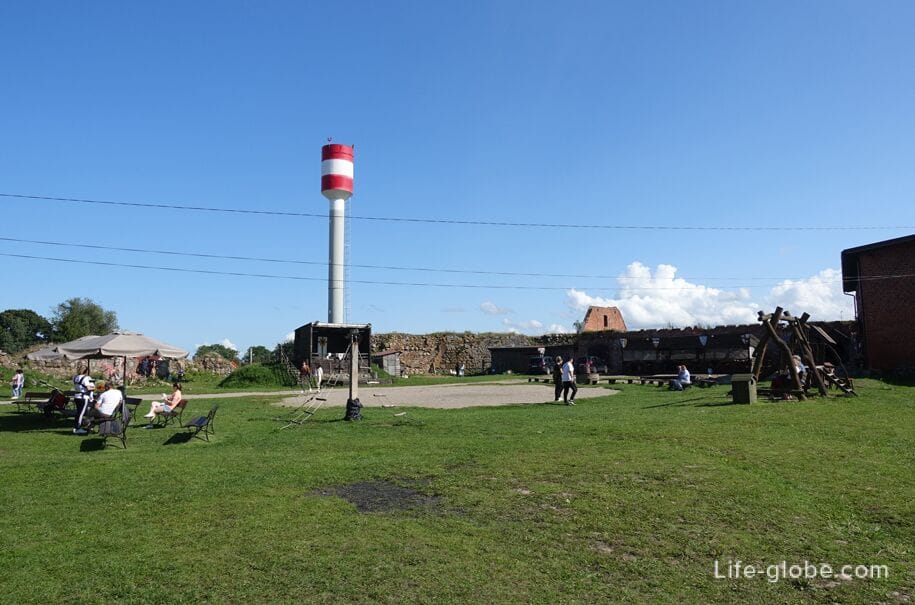

Video of a jousting match in Shaaken Castle
In one of the basements on the territory there is a cellar with alcoholic beverages (moonshine, schnapps, etc.). You can taste and, if desired, purchase.
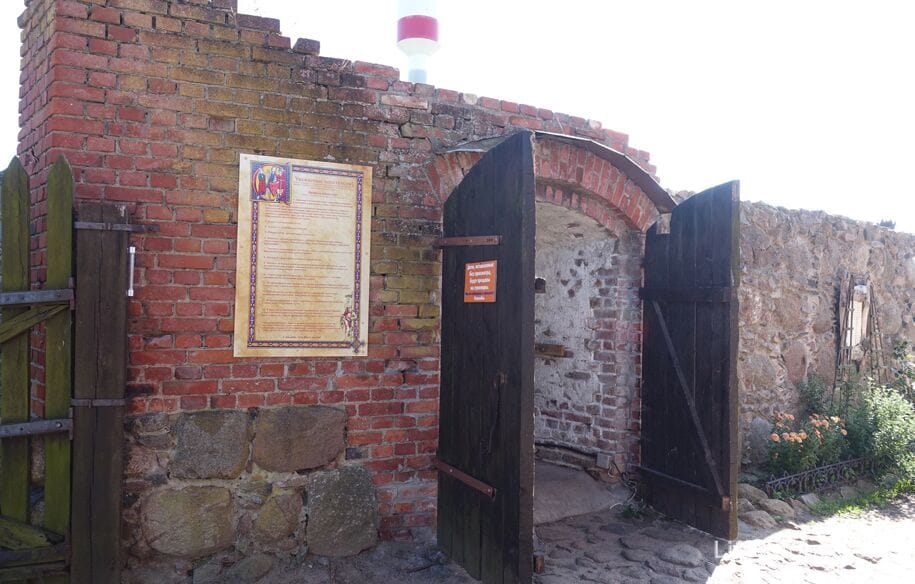
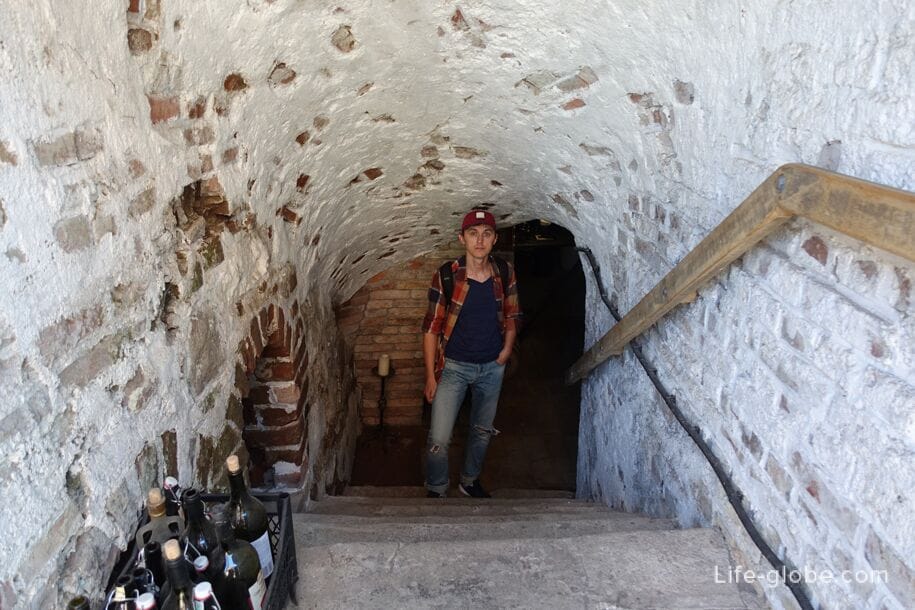

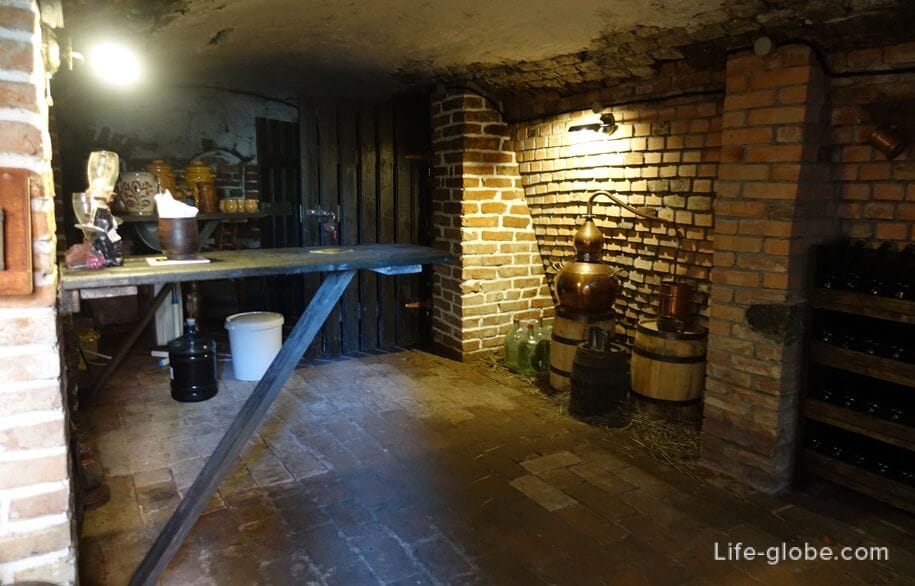
There is also an improvised barn on the territory of the castle complex,
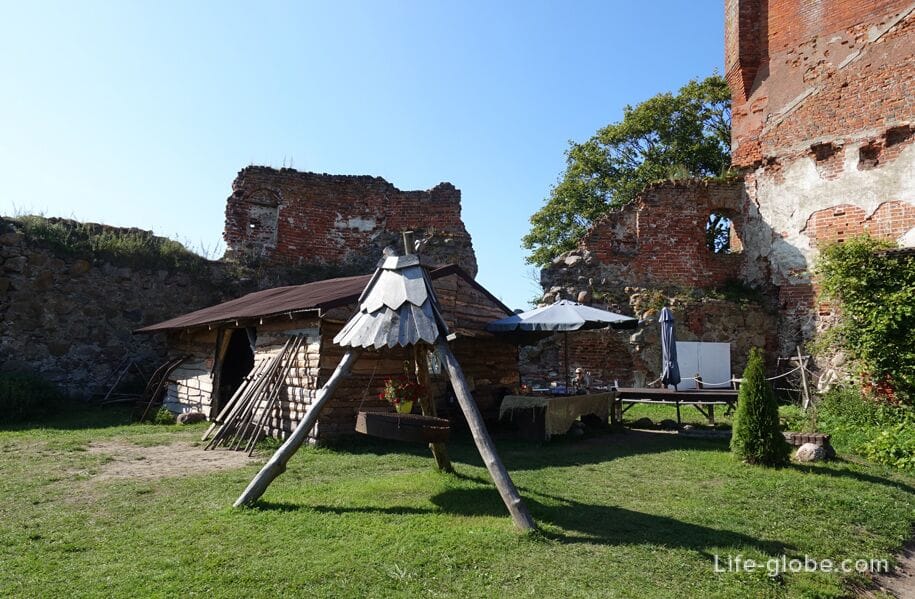
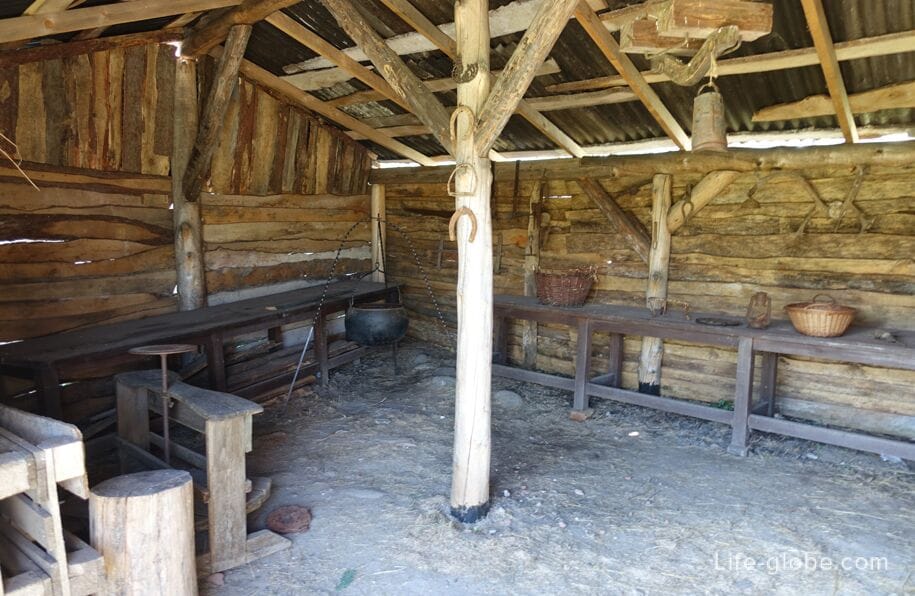
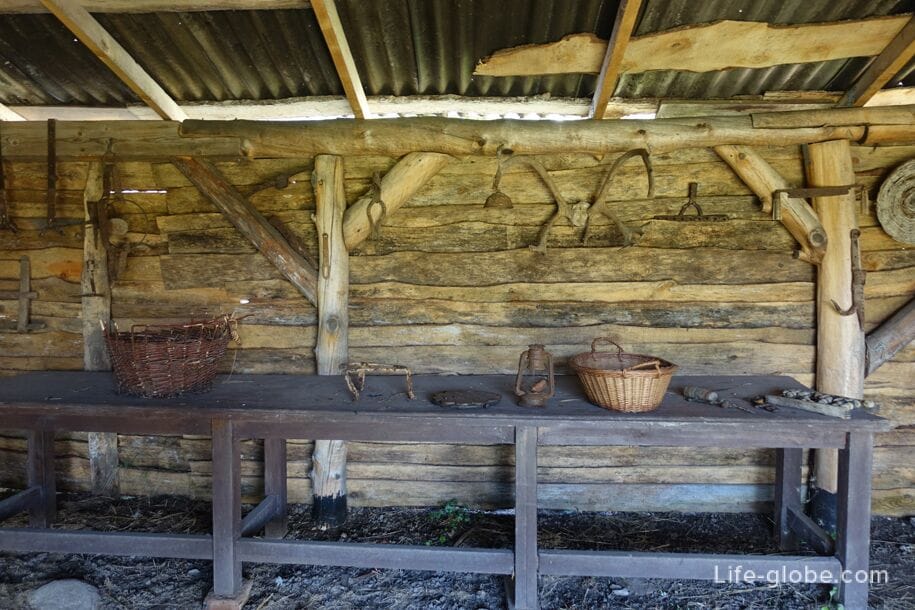
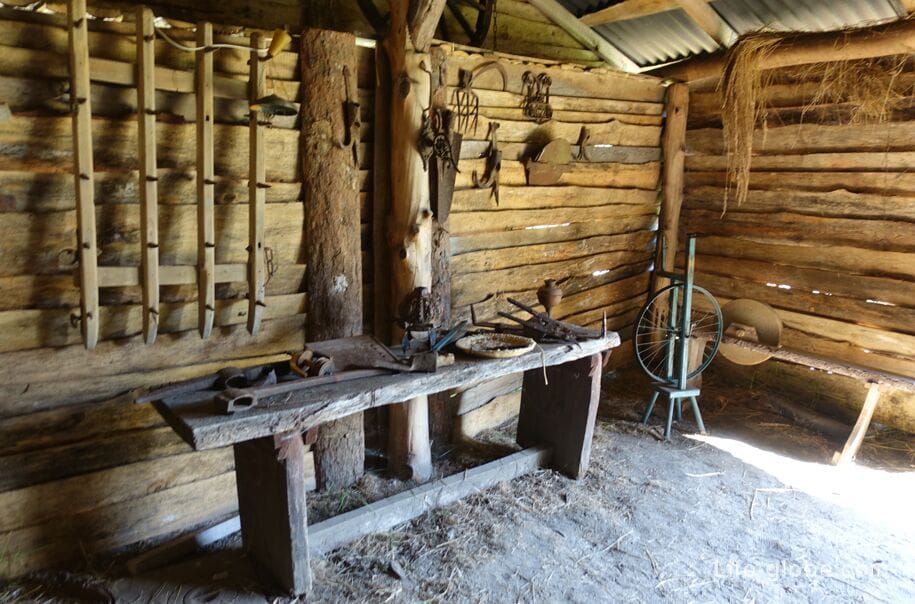
a tavern, a souvenir shop, a wish tree, a corner with animals; you can shoot arrows, swing on a swing, etc.
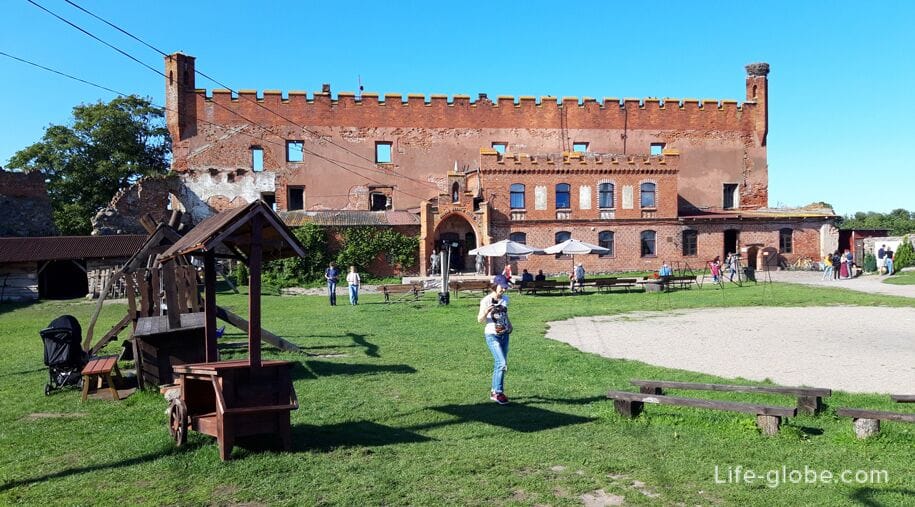


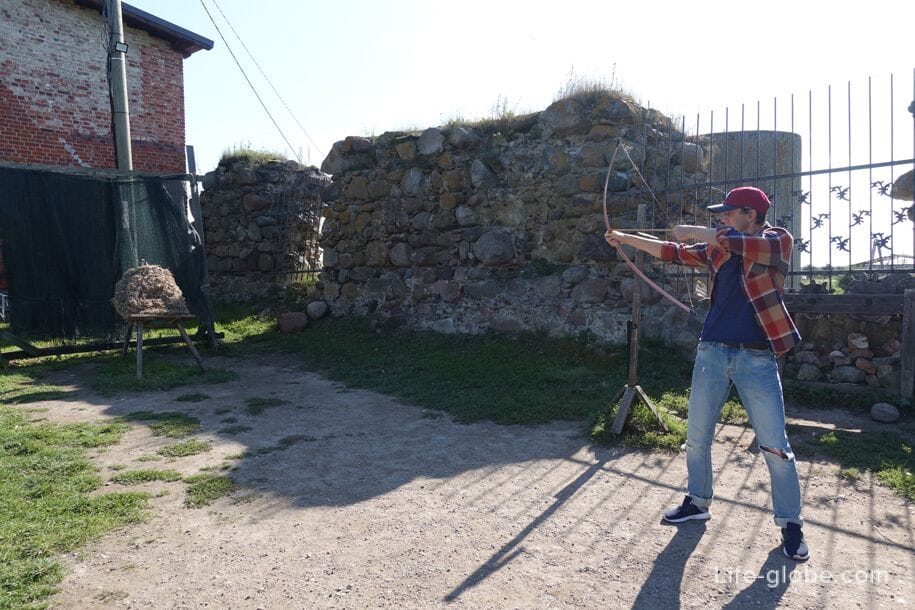
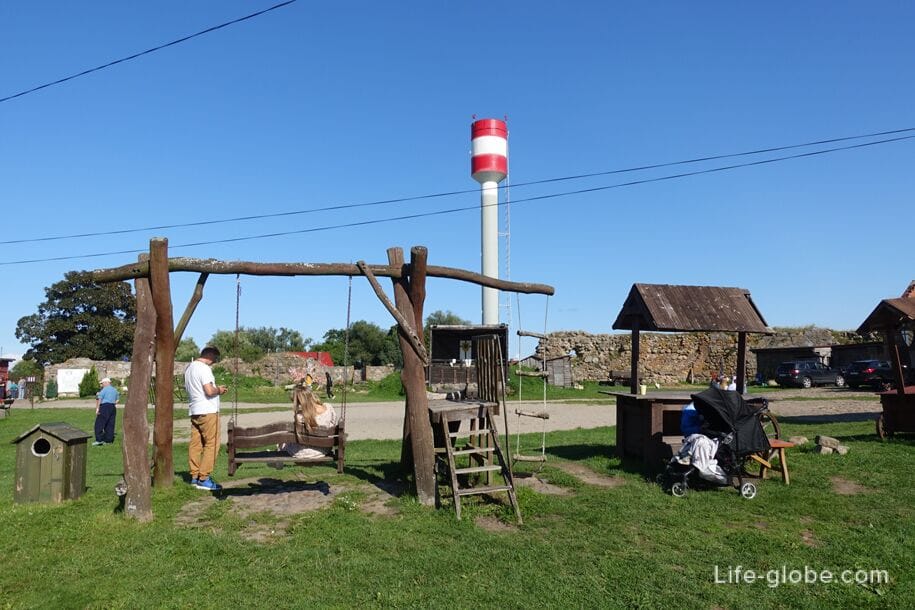

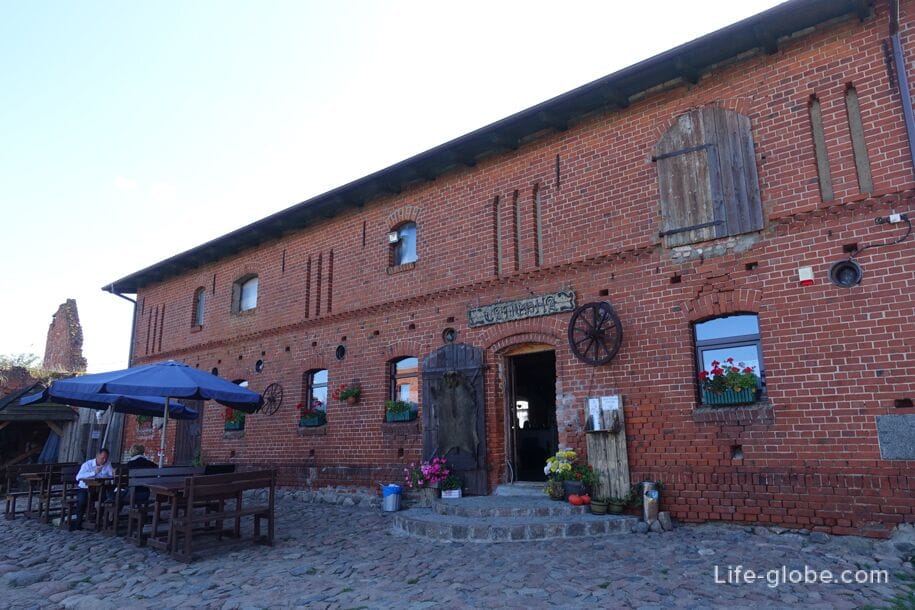
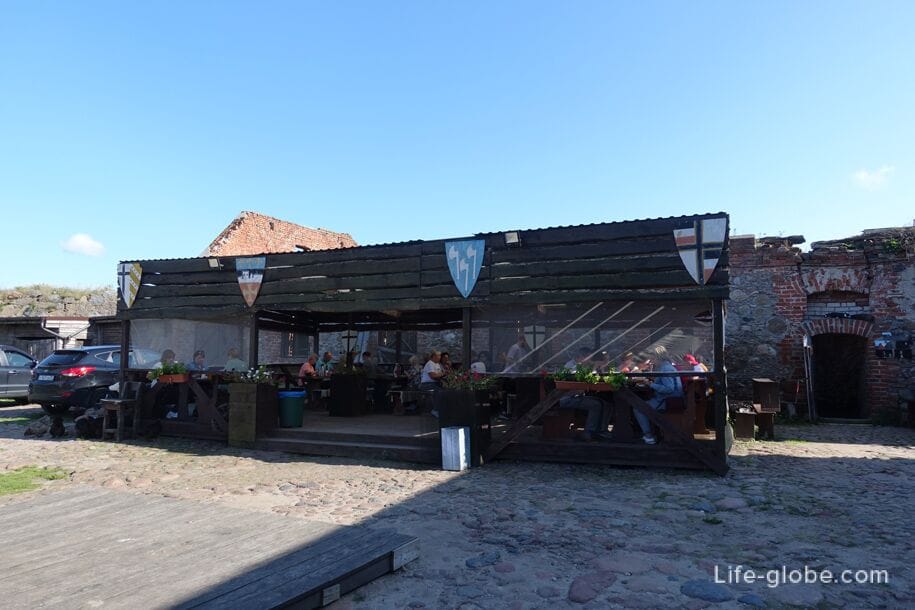

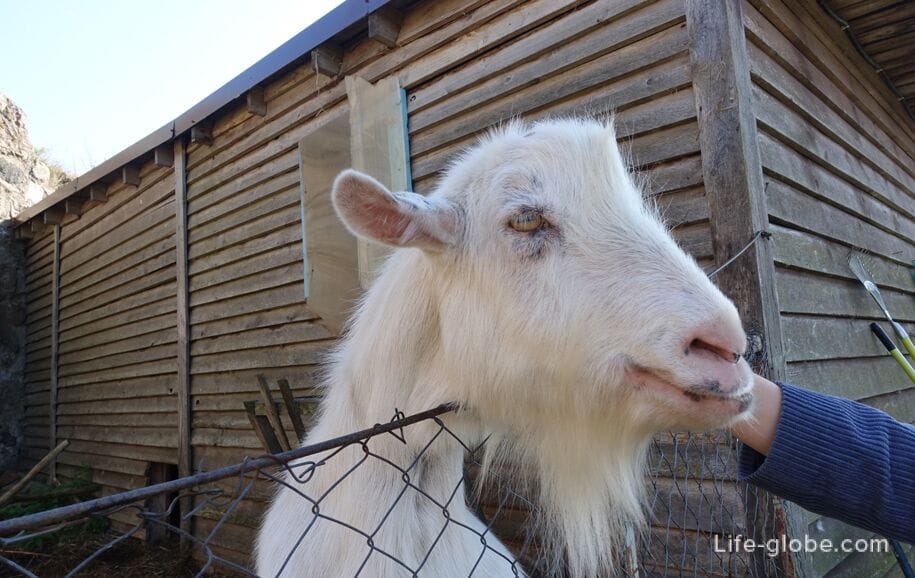
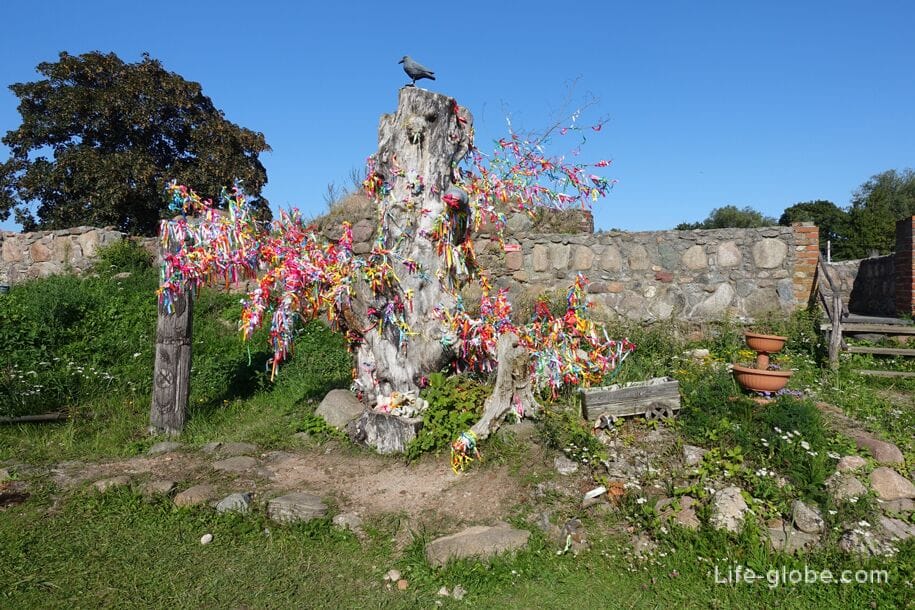

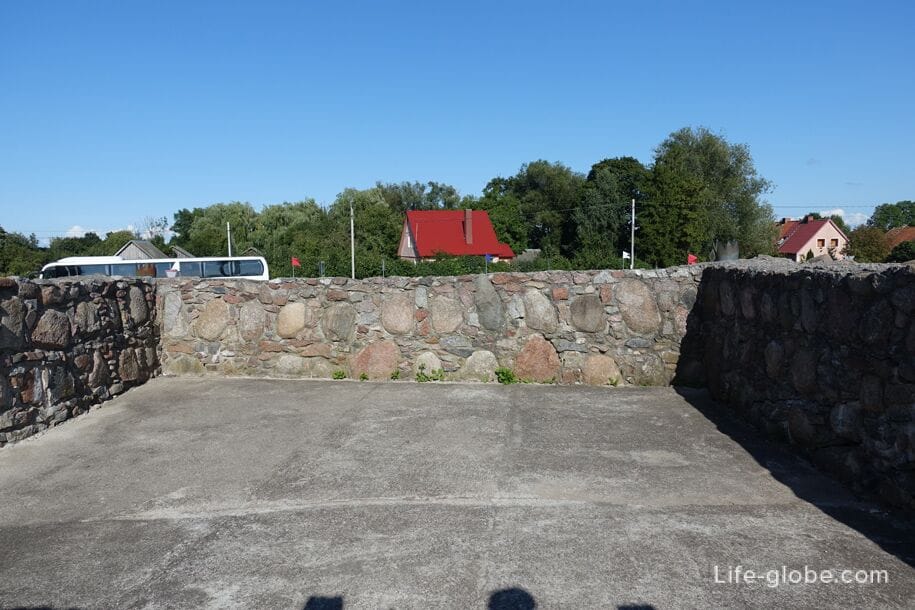

Near the castle there is a cheese factory Schaaken Dorf (Schaaken Dorf), which produces cheeses of several varieties and chocolate.
You can visit a tasting tour; look through the glass at the working equipment and stored maturing cheese heads. Cheeses and chocolate can be purchased here, in the store. Learn more about the cheese factory with photos and websites...
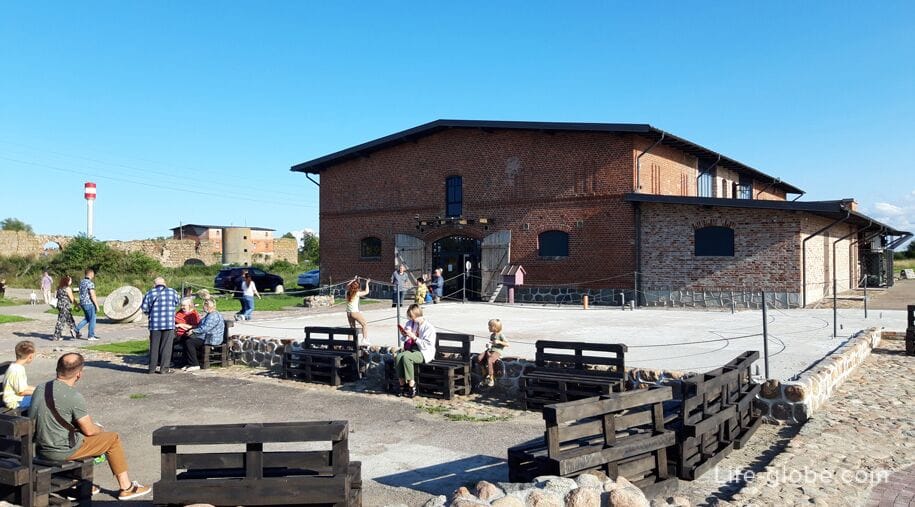

Behind the Shaaken Castle, a small pond attracts attention. Cherry plum grows nearby (in August it is already possible to eat - delicious).

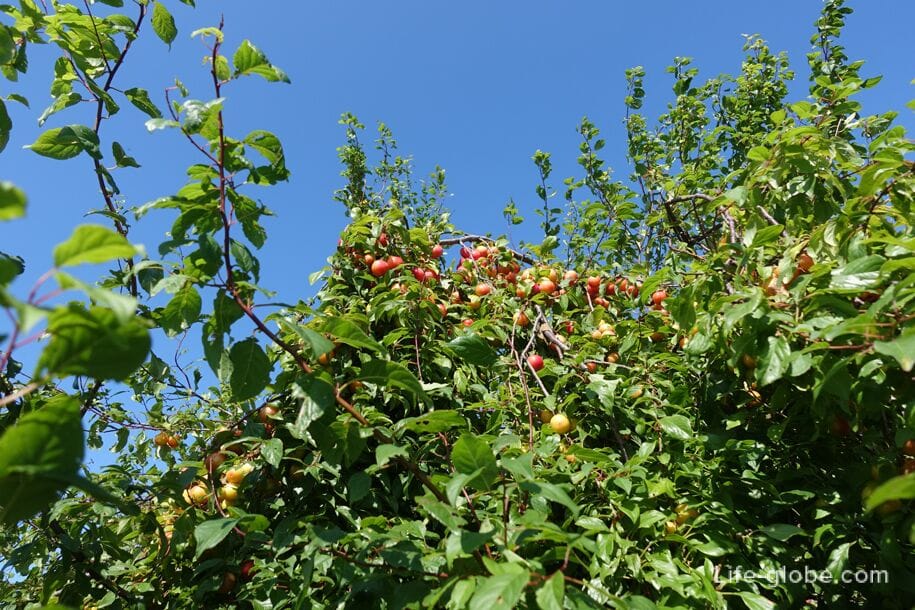
An "old" picturesque and photographic road leads to the castle and the cheese factory.
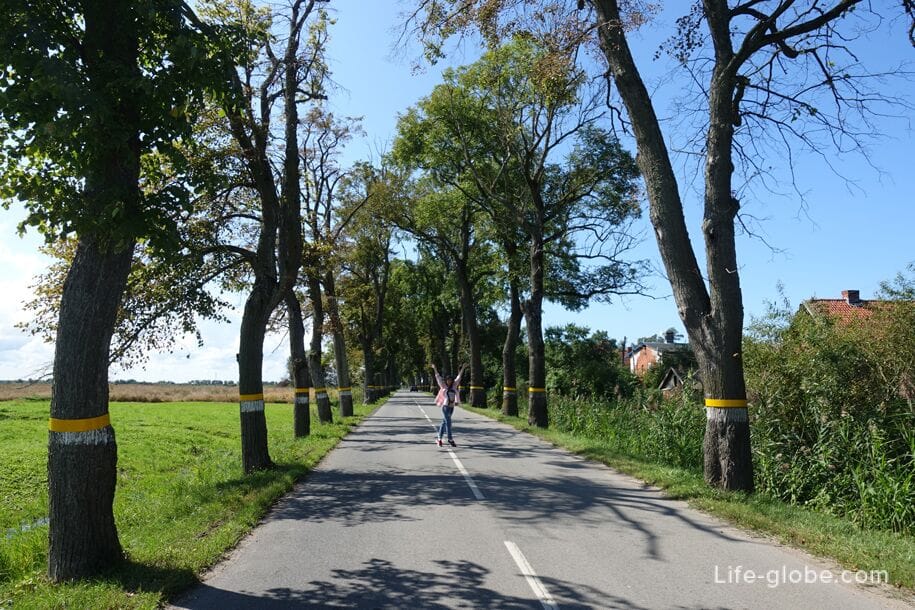
Shaaken Castle is located in the village of Nekrasovo, on Tsentralnaya Street.
Coordinates of Shaaken Castle: 54°54'21.0"N 20°40'08.0"E (54.905833, 20.668889).
The castle hosts various events throughout the year, including festivals and concerts.
Entrance to the castle is paid: adult ticket - 250 rubles, children's ticket - 200 rubles, children under 7 years old - free of charge. Guided tours are conducted around the castle, the cost: + 70 rubles to the entrance ticket.
The opening hours of the castle, the exact cost of tickets (as it may vary), the schedule of various events in the castle and other information are recommended to clarify before visiting: vk.com/shaaken , instagram.com/zamokshaaken .
You can get to Nekrasovo and Shaaken by taxi, car or public buses.
Bus No. 116 runs from Kaliningrad (from the Southern Bus Station) with stops around the city. You can check the bus schedule and fare on the official website: avl39.
You can also visit the Shaaken Castle and the cheese factory with excursions around the region
All accommodation facilities in the Kaliningrad region, including in Kaliningrad and resort towns, can be viewed and booked here